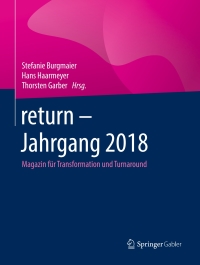



Required information [The following information applies to the questions displayed below.) Warnerwoods Company uses a periodic inventory system. It entered into the following purchases and sales transactions for March Units Sold at Retail Units Acquired at Cost 110 units @ $45 per unit 410 units @ $50 per unit Mar. Date Activities Mar 1 Beginning inventory 5 Purchase Mar. 9 Sales Mar. 18 Purchase Mar. 25 Purchase Mar. 29 Sales 430 units @ $80 per unit 140 units @ $55 per unit 220 units @ $57 per unit 180 units @ $90 per unit 610 units Totals 880 units For specific identification, the March 9 sale consisted of 60 units from beginning inventory and 370 units from the March 5 purchase; the March 29 sale consisted of 50 units from the March 18 purchase and 130 units from the March 25 purchase. 3. Compute the cost assigned to ending inventory using (a) FIFO, (b) LIFO, (C) weighted average, and (d) specific identification. (Round your average cost per unit to 2 decimal places.) a) Periodic FIFO Cost of Goods Available for Sale Cost of Goods Sold Ending Inventory Cost per Cost per Cost per # of units Cost of Goods Available for Sale # of units sold Cost of Goods Sold unit unit # of units in ending inventory unit Ending Inventory 110 $ 45.00 $ 4,950 $ 0.00 $ 0 $ 0.00 $ 0 Beginning inventory Purchases: 410 $ 50.00 410 $ 20,500 $ 0.00 0 50.00 0.00 $ 0 $ 0.00 0 March 5 March 18 March 25 Total 140 $ 55.00 220 $ 57.00 880 20,500 7,700 12,540 $ 45,690 0 $ 0.00 0 410 $ 20,500 0 b) Periodic LIFO Cost of Goods Sold Ending Inventory Cost per Cost of Goods Available for Sale Cost of Goods # of units unit Available for Sale 110 $ 45.00 $ 4,950 # of units sold Cost per unit Cost of Goods Sold # of units in ending inventory Cost per unit Ending Inventory $ 0 Beginning inventory Purchases: March 5 410 $ 0 50.00 55.00 March 18 140 $ 140 $ 55.00 0 20,500 7,700 12,540 $ 45,690 220 $ 57.00 57.00 March 25 Total 0 220 $ 360 7,700 12,540 $ 20,240 880 0 Specific Identification Cost of Goods Available for Sale Cost of Goods Sold Ending Inventory Cost per # of units Cost of Goods Available for Sale $ 27,000 # of units sold Cost per unit Cost of Goods Sold # of units in ending inventory Cost per unit unit Ending Inventory 580 $ 40.00 0 $ 40.00 $ 0 Beginning inventory Purchases: Feb 10 420 $ 38.00 16,800 320 $ 38.00 12,160 100 $ 38.00 3,800 180 $ 25.00 0 March 13 Aug 21 Sep 5 $ 25.00 $ 45.00 190 $ 45.00 0 5,400 5,000 23,000 $ 77,200 560 $ 41.00 0 $ 41.00 Total 1,930 320 $ 12,160 100 $ 3,800 4. Compute gross profit earned by the company for each of the four costing methods. (Round your average cost per unit to 2 decimal places and final answers to nearest whole dollar.) FIFO LIFO Weighted Specific Average Identification $ 50,600 $ 50,600 Sales $ 50,600 $ 50,600 Less: Cost of goods sold Gross profit $ 50,600 $ 50,600 $ 50,600 $ 50,600










